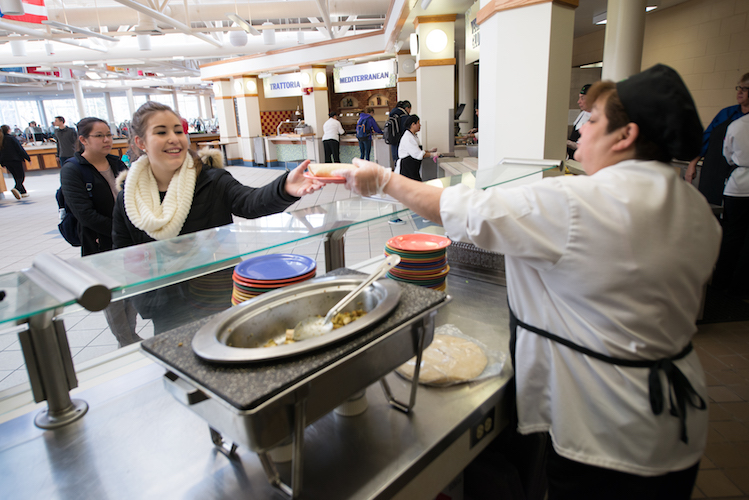New dining services offer healthy, local fare.
Westfield State’s bold decision to launch its own self-operated dining services has enabled it to offer a popular farm-to-fork model. Made possible by a grant from the Henry P. Kendall Foundation, the University implemented the new program last summer under the guidance of University of Massachusetts, Amherst, Dining, which was recently ranked No. 1 in the country for Best Campus Food by the Princeton Review.
The new dining services offer healthier, more sustainable meal options, which according to Andrew Mankus, director of Dining Services, is what students said they wanted in surveys last spring. Locally sourced and higher-quality foods were among the most important aspects students said they looked for in the University’s dining services. “We pushed for sustainable and healthy foods,” says Food Service Committee member Andrew Manchino ’17. “Now that we have them, we have completed a huge goal at the University. We have food that people will appreciate eating every day.”
Mankus says that the University partners with eight to 10 local vendors and is approximately 15 percent locally sourced. Hinckley Harvest Farm in Westfield supplies produce, as well as fall decorations, such as gourds, for instance. “Supporting local businesses is an important concept, and it is great to see Westfield State taking a lead in this,” says Britney Hinckley, who was particularly impressed by the dining staff’s creation of pumpkin whoopee pies from her farm’s produce.
Mankus continues to collect survey cards and meets weekly with the Student Government Association’s Food Service Committee to ensure that students’ voices are being heard. Committee Co-chair Rehana Yusif ’17 says a major benefit of being self-operated is that when suggestions and concerns are brought to the attention of the committee, they can be addressed directly without a third-party approval.
“A large part of this transformation is the continued discussions Dining Services has with the Food Service Committee, so that we can strive to be a top-rated dining program in the nation,” Mankus says.
Student favorites include breakfast-all-day options, particularly omelets, and the sushi and stir-fry stations. For some, sampling the new offerings has become a new hobby.
“I find myself exploring more of the stations than I did last year,” says Committee Co-chair Shayna Arnott ’18. “The dining commons is the hub of the campus this year.”
Survey results show 90 percent of students see an overall improvement in the new dining services, but Mankus also hopes the transition inspires lifestyle changes on campus.
“We are creating positive habits while educating students on the importance of eating a healthy, sustainable meal,” Mankus says.




